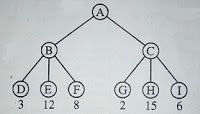Welcome to the Artificial Intelligence MCQs Page
Dive deep into the fascinating world of Artificial Intelligence with our comprehensive set of Multiple-Choice Questions (MCQs). This page is dedicated to exploring the fundamental concepts and intricacies of Artificial Intelligence, a crucial aspect of UGC CBSE NET Exam. In this section, you will encounter a diverse range of MCQs that cover various aspects of Artificial Intelligence, from the basic principles to advanced topics. Each question is thoughtfully crafted to challenge your knowledge and deepen your understanding of this critical subcategory within UGC CBSE NET Exam.
Check out the MCQs below to embark on an enriching journey through Artificial Intelligence. Test your knowledge, expand your horizons, and solidify your grasp on this vital area of UGC CBSE NET Exam.
Note: Each MCQ comes with multiple answer choices. Select the most appropriate option and test your understanding of Artificial Intelligence. You can click on an option to test your knowledge before viewing the solution for a MCQ. Happy learning!
Artificial Intelligence MCQs | Page 5 of 12
Explore more Topics under UGC CBSE NET Exam
Then, the prefix expression and post-fix expression determined using this ordered tree are given as ........... and ............. respectively.
I. ∀x v(x) ⇔ (∀y e(x, y) ⇒ ¬m(y))
II. ∀x v(x ) ⇔ (¬(∃y m(y) ˄ e(x, y)))
III. ∀x (∃y m(y) ˄ e(x, y)) ⇔ ¬v(x)
One can determine that
List – I List – II
I. Semantic Network a. Knowledge about what to do as opposed to
how to do it.
II. Frame b. A premise of a rule that is not concluded
by any rule.
III. Declarative knowledge c. A method of knowledge representation that
uses a graph.
IV. Primitive d. A data structure representing stereotypical
knowledge.
Codes :
I II III IV
I1 : If it is Sunday then school will not open.
The school was open.
Inference : It was not Sunday.
I2 : If it is Sunday then school will not open.
It was not Sunday.
Inference : The school was open.
Which of the following is correct?

Suggested Topics
Are you eager to expand your knowledge beyond Artificial Intelligence? We've curated a selection of related categories that you might find intriguing.
Click on the categories below to discover a wealth of MCQs and enrich your understanding of Computer Science. Happy exploring!








